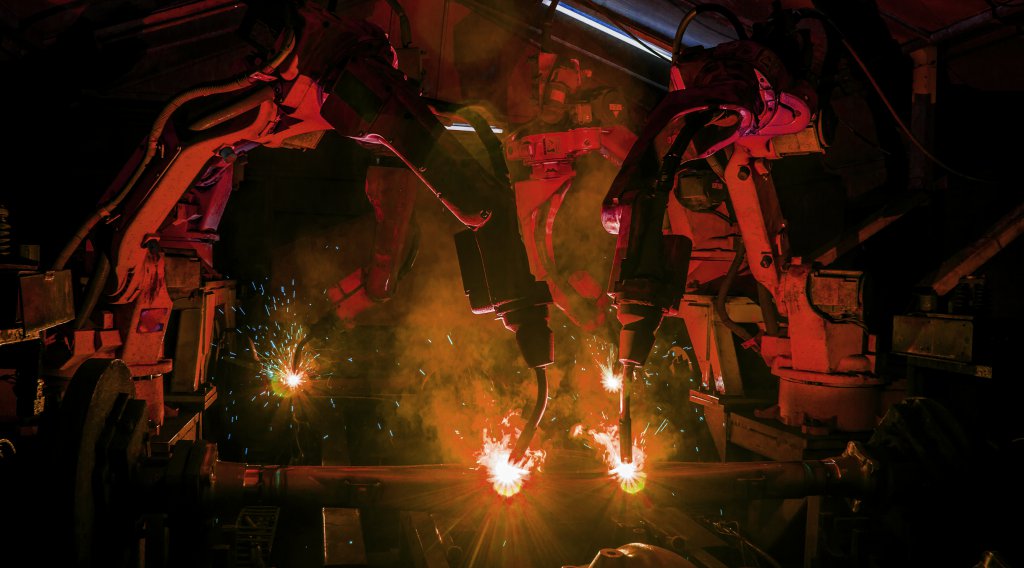Building Smart Factories With Schneider Electric’s IX Tech. Adoption of emerging technologies fueled by accelerated digital transformation has taken industry’s imagination by storm. Industry 4.0 trends such as the internet-of-things (IoT), artificial intelligence (AI), machine learning (ML), big data analytics and digital twins are now starting to change traditional production methods and entire businesses. Technology is enabling enterprises to explore new business models and opportunities that open up new horizons, promising growth and opportunity.
However, transformation is also resulting in unprecedented levels of competition in practically all industries, with new, technically and digitally astute startups challenging some of the older order. To be able to meet the ever-increasing global production demand, factories of the future should have specific characteristics:
- Agile – To be able to meet the continually-changing market and business environment, a business should also be able to respond.
- Efficient – Achieving optimal operational cost and energy efficiency is no longer a luxury afforded to a few, but a strategic imperative for companies to remain competitive.
- Reliable – Future market demands robust and fail-safe processes with minimal downtime to ensure consistent throughput and uninterrupted supply.
- Collaborative – Modern manufacturing process are made up complex and distributed but interconnected network of entities that are highly focused on core competencies.
- Secure – When it comes to deploying cutting edge technologies such as IoT and cloud-based solutions, data security should remain the number one priority – interconnectivity on a massive scale has potential for downsides, too.
According to one estimate by Capgemini, smart factories will boost manufacturing performance, adding up to US$500 billion to US$1.5 trillion to the global economy by 2023. Productivity improvement is expected to accelerate at seven times the rate of growth since 1990. The cause is the ubiquity of technology and its exponential increase in power, on (roughly) the two-year basis of Moore’s law.

Overcoming digital transformation pain points
While the benefits of digital transformation and factories of the future are apparent, some hesitate due to several preconceived notions. Chief among them is the lack of understanding of the nature of a digital journey. Many, especially in the manufacturing sector and other “traditional” industries would not know how to start a digital transformation process.
Secondly, organizations are also often concerned about the significant CAPEX required to undertake such massive projects that rip up or replace current status quos, workflows and processes with expensive, complicated technologies and systems. Furthermore, they are also worried that efforts to modernize the processes will disrupt the business, and they will have to retrain the workforce. In all, how much will this cost, and how much will it lose us?
However, companies should not let these factors deter them from pursuing the digital transformation agenda. There are more strategic approaches that manufacturers can take to kickstart their transformation agenda with solutions that are cost effective and secure and that are guaranteed to keep business disruptions minimal. In that context, the cost of lost business and lost new opportunities is greater than the cost of transformation.
Digital transformation, simplified
Digital transformation is an ongoing process – a continuous journey – and as such, there are many ways to begin. A common starting point would be getting connected. Being connected internally, and to other facilities elsewhere, and to the wider world, is an optimization initiative that improves operations without massive revamps required to the workflow. So, companies using an industrial IoT platform could first just connect whatever assets they already have.
Most likely, these machines and equipment are already connected, and it is just a matter of integrating smarter devices and streamlining the data connection. But, in industry, systems are not necessarily interoperable. Companies could also do themselves a favor by deploying a cloud based (or hybrid) platform that normalizes all systems’ outputs, inputs and data flows.

Even the simplest analytics solution lets companies start to leverage the insights from the collective information and empowers business leaders to make informed decisions based on real-time, real-life data. Beyond that, the intelligence gathered by connected devices could be used to implement other improvements to operational efficiency, develop new workflows or help with scheduling preventative maintenance.
Industrialists need a smart, scalable and reliable connectivity solution, such as Schneider Electric’s EcoStruxture. The company’s IIoT-enabled, open and interoperable architecture and platform is quick and easy deploy, and more importantly, allows companies to gain full control their processes down to a per-sensor or per-control unit basis, rather than merely seeing them. By combining smart controls and state of the art industrial grade network technology, EcoStruxture Plant powers process automation, maximizing productivity in a highly cost-efficient manner, and one that has minimum impact on existing processes, outputs and staffing requirements.
For instance, when Casa Granado, Brazil’s oldest cosmetics brand wanted to upgrade its legacy systems to better integrate two of its production lines, create a tailored and flexible production facility, identify bottlenecks, and reduce time-to-market, it turned to Schneider Electric.
By deploying an EcoStruxture Plant for consumer packaged goods, the company managed to boost efficiency, improve product quality, and gain better visibility and traceability across the production cycle. As a result, Casa Granado has seen production rise by 15 percent.
So, if you are looking for a solution to kickstart your digital transformation agenda, and do not know where to start, get in touch Schneider Electric now to learn more about their solutions and services.
Source: techwireasia










